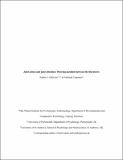Files in this item
Joint action and joint attention : drawing parallels between the literatures
Item metadata
| dc.contributor.author | Milward, Sophie | |
| dc.contributor.author | Carpenter, Malinda | |
| dc.date.accessioned | 2019-03-26T00:37:41Z | |
| dc.date.available | 2019-03-26T00:37:41Z | |
| dc.date.issued | 2018-03-26 | |
| dc.identifier | 252460845 | |
| dc.identifier | dc8a3e62-c6ad-4572-987b-a0c7f38ee1d9 | |
| dc.identifier | 85044423739 | |
| dc.identifier | 000429579200003 | |
| dc.identifier.citation | Milward , S & Carpenter , M 2018 , ' Joint action and joint attention : drawing parallels between the literatures ' , Social and Personality Psychology Compass , vol. Early View , e12377 . https://doi.org/10.1111/spc3.12377 | en |
| dc.identifier.issn | 1751-9004 | |
| dc.identifier.other | ORCID: /0000-0003-3983-2034/work/64697958 | |
| dc.identifier.uri | https://hdl.handle.net/10023/17369 | |
| dc.description.abstract | Two of the most important milestones in children’s development are joint action (acting with others) and joint attention (attending with others). These are popular fields in both psychology and philosophy, but have formed surprisingly independent literatures despite the close similarities they share in terms of theoretical and methodological issues. This article systematically compares these fields and draws attention to specific and more general ways in which each could benefit from the other if communication between them were increased. We highlight a clear opportunity within these fields, but this could be a useful approach in cognitive science more generally. | |
| dc.format.extent | 499346 | |
| dc.language.iso | eng | |
| dc.relation.ispartof | Social and Personality Psychology Compass | en |
| dc.subject | BF Psychology | en |
| dc.subject | T-NDAS | en |
| dc.subject.lcc | BF | en |
| dc.title | Joint action and joint attention : drawing parallels between the literatures | en |
| dc.type | Journal article | en |
| dc.contributor.institution | University of St Andrews. School of Psychology and Neuroscience | en |
| dc.contributor.institution | University of St Andrews. Centre for Social Learning & Cognitive Evolution | en |
| dc.identifier.doi | https://doi.org/10.1111/spc3.12377 | |
| dc.description.status | Peer reviewed | en |
| dc.date.embargoedUntil | 2019-03-26 |
This item appears in the following Collection(s)
Items in the St Andrews Research Repository are protected by copyright, with all rights reserved, unless otherwise indicated.

